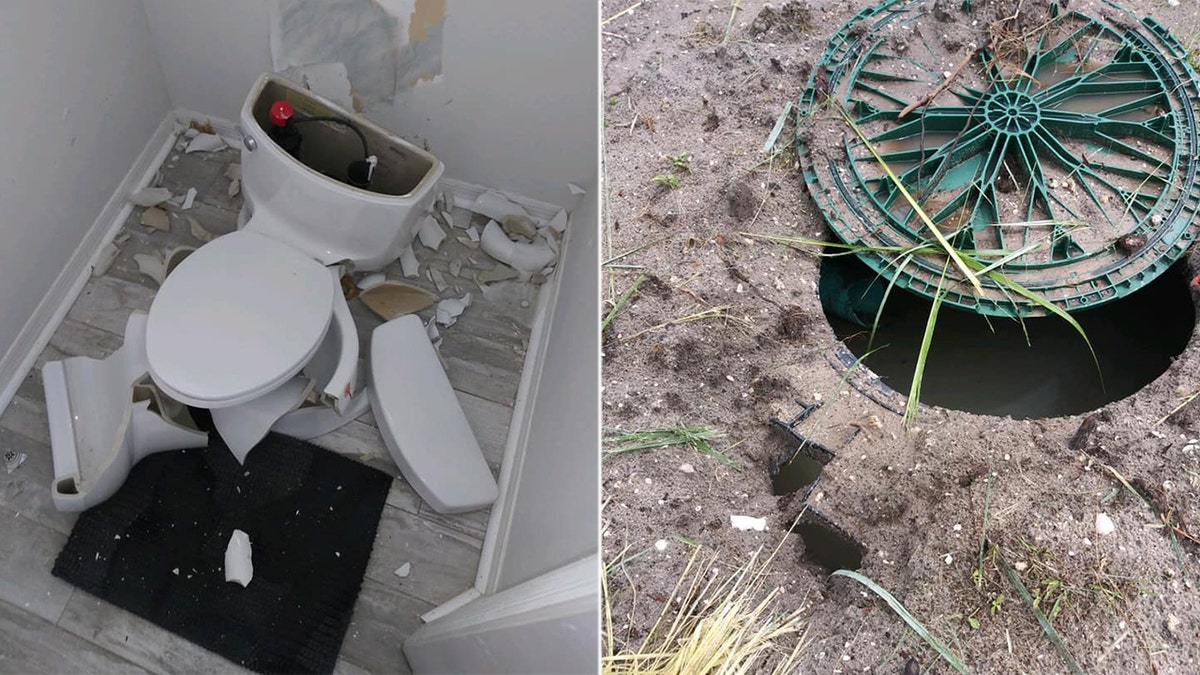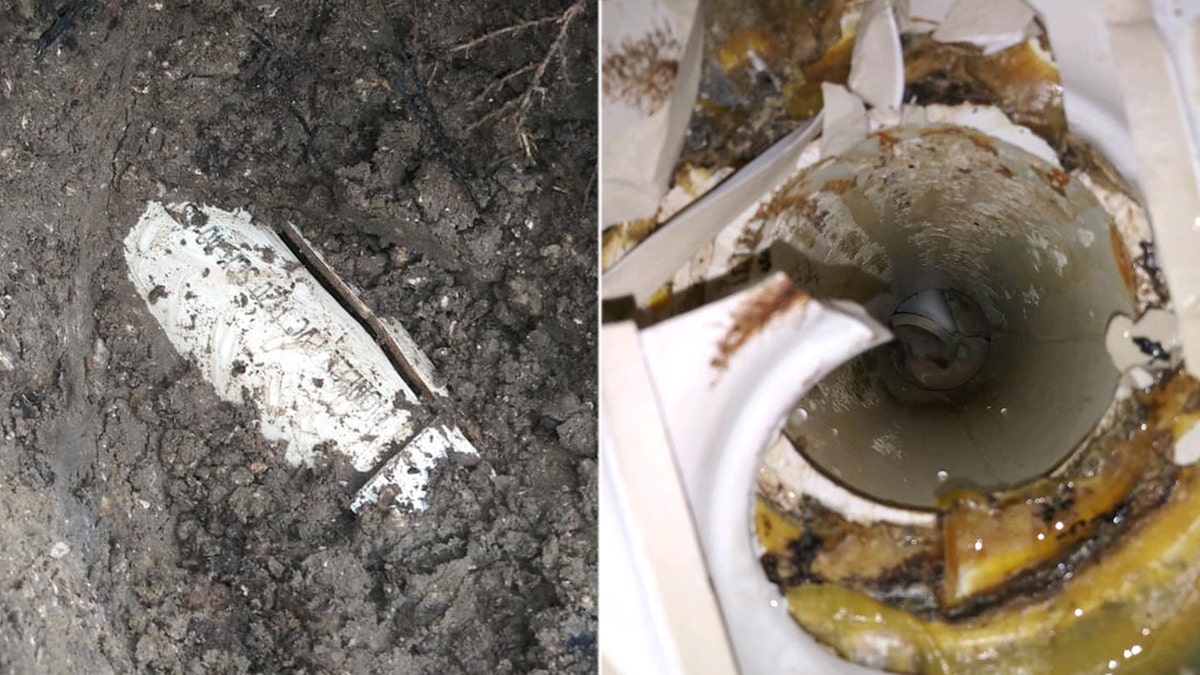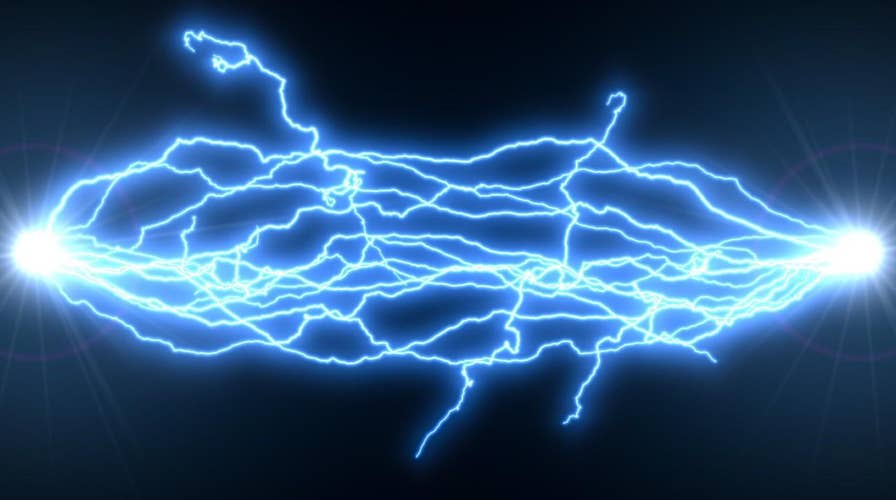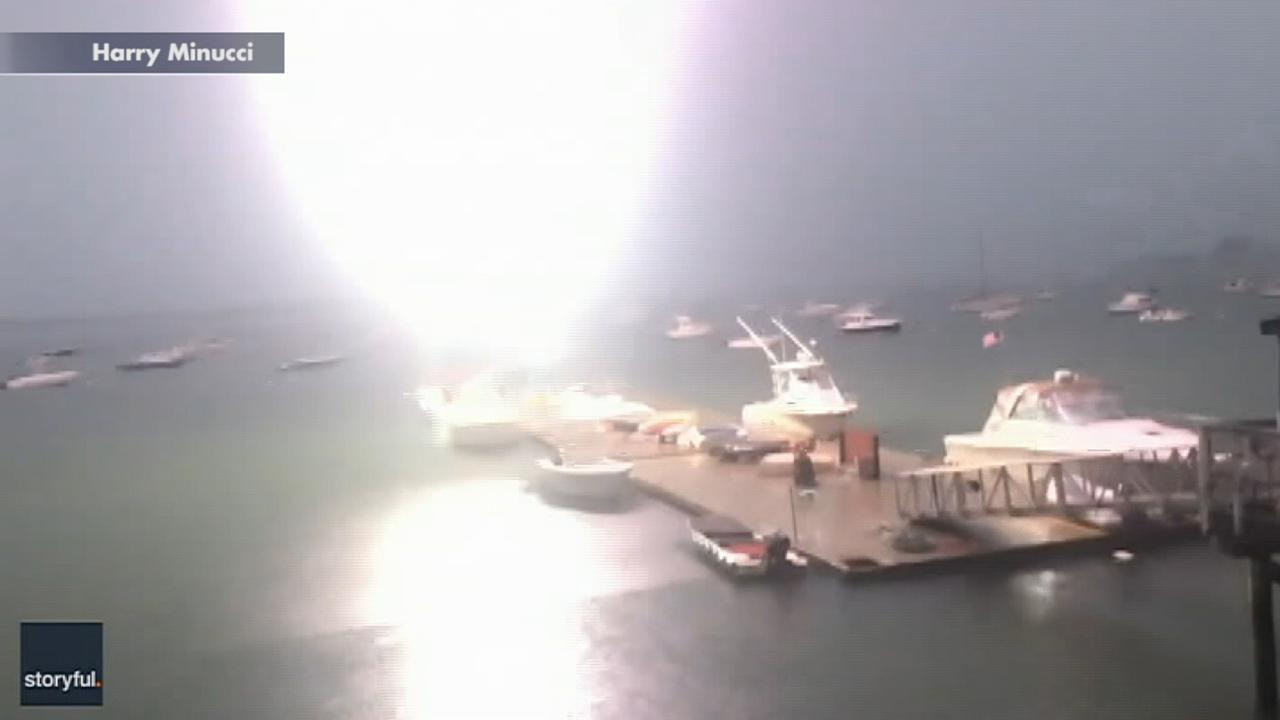Lightning strikes in these U.S. states the most
These top U.S. states that have experienced the most lighting strikes in 2018.
A Florida homeowner got an explosive surprise over the weekend after a lightning strike triggered a blast that destroyed a toilet.
Marylou Ward and her husband were sitting in their Port Charlotte home as a thunderstorm rolled through on Sunday when she said she heard a "boom" that was "the loudest noise I ever heard."
“We smelled smoke and I looked outside,” Ward told WINK News. “It was the smoke from the septic tank that was coming.”
NORWEGIAN RUNNER STRUCK, KILLED BY LIGHTNING DURING ULTRAMARATHON IN ITALY, OFFICIALS SAY
When she stepped into her bathroom, she discovered the toilet was now in hundreds of pieces. A plumber from A-1 Affordable Plumbing Inc. told the couple the lightning strike ignited methane gas that built up in the pipes and septic tanks. Methane is typically emitted during the breakdown of sewage in waste systems.

A toilet exploded inside a home in Florida after lightning struck nearby over the weekend. (A-1 Affordable Plumbing Inc.)
"The toilet exploded in homeowners master bathroom sending porcelain airborne like a missile (the porcelain penetrated into wall). Most likely all sewer piping will need to be replaced and septic tank," a plumber posted to Facebook. "Luckily no one was hurt! Scheduling a camera inspection this week to see how much sanitary pipe needs to be replaced!!"
Besides her toilet being destroyed, Ward said her septic tank and indoor plumbing were also wrecked. The blast also broke a window in the couple's master bedroom and destroyed yard decorations. No one was hurt during the incident, but Ward said it made her feel lucky.

The lightning strike also damaged a Florida homeowner's septic tank and indoor plumbing. (A-1 Affordable Plumbing Inc.)
“I’m just glad none of us were on the toilet,” she told WINK News. “That’s the main thing.”
LIGHTNING HITS BOAT IN BOSTON HARBOR, EXPLOSIVE VIDEO SHOWS
In 2018 the Sunshine State had the highest density of lightning strikes, according to environmental measurement specialist Vaisala released its Annual Lightning Report. Florida had the highest average of negative ground-to-cloud flasher per square mile, with 24, according to the study.
Lighting typically strikes tall objects such as trees and skyscrapers because their tops are closer to the base of the storm cloud, according to The National Severe Storms Laboratory.
"However, this does not always mean tall objects will be struck. It all depends on where the charges accumulate," according to the agency. "Lightning can strike the ground in an open field even if the tree line is close by."
So far this year, there have been 10 lightning strike-related deaths this year, according to the National Weather Service. Those deaths were reported in Florida, Texas, Kentucky, Pennsylvania, South Carolina and Alabama.
CLICK HERE FOR THE FOX NEWS APP
Even when inside of safe shelter, people can still be at risk when lighting strikes.
"A house is a safe place to be during a thunderstorm as long as you avoid anything that conducts electricity," the NWS states. "This means staying off corded phones, electrical appliances, wires, TV cables, computers, plumbing, metal doors and windows. Windows are hazardous for two reasons: wind generated during a thunderstorm can blow objects into the window, breaking it and causing glass to shatter and second, in older homes, in rare instances, lightning can come in cracks in the sides of windows."
Fox News' James Rogers contributed to this report.



